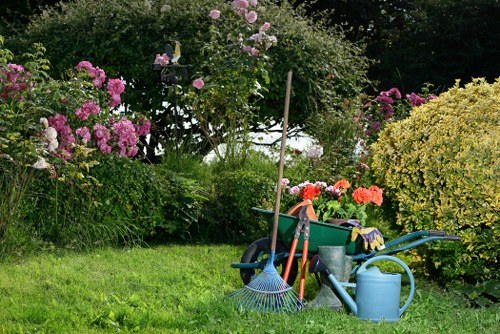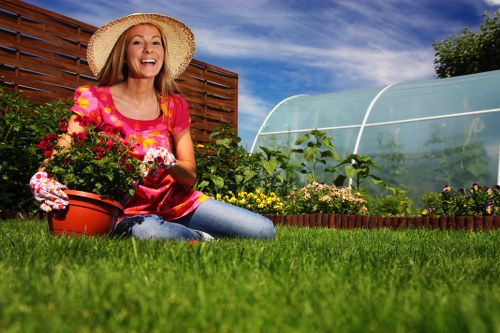Transforming Green Spaces: Landscaping in Regents Park

Regents Park stands as one of London’s most cherished green spaces, renowned for its stunning landscapes and vibrant flora. Landscaping in Regents Park is not just about maintaining beauty; it’s about enhancing the natural environment to create a harmonious blend of nature and design. Whether you're a local resident, a visitor, or a professional landscaper, understanding the nuances of landscaping in this iconic park can enrich your appreciation and participation in its upkeep.
The park spans over 410 acres, offering a diverse range of habitats from manicured gardens to wild woodland areas. Effective landscaping practices are essential to preserve its ecological balance while providing picturesque settings for leisure and recreation. This article delves into the key aspects of landscaping in Regents Park, exploring design principles, plant selection, sustainable practices, and the role of the community in maintaining this urban oasis.
At the heart of Regents Park lies its historical significance and the legacy of its design. Originally part of the expansive estate of the Earls of Oxford, the park was meticulously landscaped to reflect both aesthetic beauty and functional utility. Today, landscaping in Regents Park continues to honor this heritage while incorporating modern techniques and sustainable practices.

The Historical Landscape of Regents Park
Understanding the historical landscape of Regents Park is essential to appreciate its current beauty and ongoing landscaping efforts. The park was designed in the early 19th century, influenced by the principles of classical garden design and the naturalistic style popularized by designers like Capability Brown. This blend of structured elegance and natural beauty sets the foundation for modern landscaping practices in the park.
Over the years, Regents Park has undergone numerous transformations to adapt to the changing needs of its visitors and the evolving landscape architecture trends. From the introduction of formal gardens and ornamental lakes to the preservation of open meadows and woodland areas, the park’s landscape reflects a dynamic interplay between tradition and innovation.
Preserving this historical integrity while implementing contemporary landscaping techniques poses unique challenges and opportunities. It requires a delicate balance between maintaining established features and introducing new elements that enhance the park’s functionality and aesthetic appeal.

Design Principles for Landscaping
Harmony with Nature
One of the core principles of landscaping in Regents Park is achieving harmony with the natural environment. This involves selecting plant species that thrive in the local climate and soil conditions, preserving existing natural features, and minimizing disruption to wildlife habitats. By working with nature rather than against it, landscapers can create sustainable and resilient landscapes that require less maintenance and support biodiversity.
Functional Aesthetics
Functional aesthetics in landscaping ensures that each design element serves a purpose beyond mere visual appeal. Paths and walkways are designed for accessibility, seating areas provide shade and rest opportunities, and water features offer both beauty and environmental benefits like water conservation and habitat creation. This approach ensures that the park remains a practical space for various activities while maintaining its scenic beauty.
Seasonal Variety
Incorporating a range of plant species that bloom at different times of the year ensures that Regents Park remains vibrant and engaging throughout all seasons. This not only enhances the park’s visual appeal but also supports local wildlife by providing continuous sources of food and shelter.

Plant Selection and Diversity
Selecting the right plants is crucial for successful landscaping in Regents Park. The selection process considers factors such as climate adaptability, maintenance requirements, and ecological benefits. Native plants are often preferred as they are well-suited to the local environment and support native wildlife. However, introducing non-invasive exotic species can also add unique aesthetic elements and diversity to the landscape.
Regents Park boasts a rich variety of plants, including vibrant flower beds, towering trees, and lush grasslands. Key species include:
- London Plane Trees: Known for their resilience and shade-providing canopies.
- Roses: A staple in many of the park’s formal gardens, offering a burst of color and fragrance.
- Japanese Maple: Adds intricate foliage and architectural interest to shaded areas.
- Lavender: Provides not only beauty but also attracts pollinators like bees and butterflies.
- Orchids: Enhance the naturalistic sections with their exotic appeal.
Maintaining plant diversity is essential for ecological balance, pest control, and overall landscape health. It ensures that the park remains resilient against diseases and environmental changes.

Sustainable Landscaping Practices
Water Conservation
Water management is a critical component of sustainable landscaping in Regents Park. Implementing efficient irrigation systems, such as drip irrigation and rainwater harvesting, helps reduce water waste and ensures that plants receive adequate hydration. Additionally, selecting drought-resistant plants can further minimize water usage.
Soil Health
Maintaining healthy soil is fundamental for robust plant growth. Practices like composting, mulching, and cover cropping improve soil structure, fertility, and moisture retention. Healthy soil also supports beneficial microorganisms and earthworms, which contribute to nutrient cycling and pest management.
Organic Practices
Adopting organic landscaping practices avoids the use of harmful chemicals, promoting a safer and healthier environment for both humans and wildlife. This includes using natural fertilizers, integrated pest management, and encouraging natural predators to control pest populations.
Energy Efficiency
Energy-efficient lighting and the use of renewable energy sources for park amenities reduce the overall carbon footprint of Regents Park. Solar-powered lights along pathways and energy-efficient irrigation pumps are examples of how sustainability can be integrated into the park’s infrastructure.
Preserving Biodiversity is paramount in landscaping Regents Park. Efforts include maintaining a variety of habitats such as wetlands, meadows, and woodlands to support a wide range of species. Creating wildlife corridors and installing birdhouses and insect hotels further enhance the park’s ecological diversity.
Community involvement plays a significant role in sustainable landscaping. Local volunteers participate in tree planting events, clean-up drives, and educational workshops, fostering a sense of ownership and responsibility towards the park’s upkeep.
Regents Park also collaborates with environmental organizations and experts to implement best practices and innovative solutions for sustainability. These partnerships help in researching and adopting new technologies and methods that benefit both the park and its visitors.
Seasonal Landscaping Strategies
Spring
Spring is a time of renewal, making it ideal for planting new species and rejuvenating flower beds. Early-spring tasks include pruning, planting bulbs, and fertilizing to encourage healthy growth. The vibrant colors of blooming flowers add fresh energy to the park’s landscapes.
Summer
Summer landscaping focuses on maintaining plant health during the warmer months. This includes regular watering, weeding, and mulching to retain soil moisture. Shade structures and comfortable seating areas provide respite for visitors enjoying the park’s beauty.
Autumn
Autumn is essential for preparing the park for winter. Tasks include clearing fallen leaves, dividing perennials, and protecting sensitive plants from frost. The rich hues of autumn foliage add a warm, inviting atmosphere to the park.
Winter
Winter landscaping involves safeguarding the landscape against harsh weather conditions. This includes pruning deciduous trees, protecting evergreen species, and ensuring pathways are clear of debris. Winter provides an opportunity to plan and design for the upcoming growing season.
Community Engagement in Landscaping
Community engagement is a cornerstone of successful landscaping in Regents Park. Encouraging local residents to participate in maintenance activities fosters a strong sense of community and shared responsibility. Volunteer programs, educational workshops, and public events are effective ways to involve the community.
- Volunteer Gardening Days: Organized events where community members help with planting, weeding, and general maintenance.
- Educational Workshops: Sessions on sustainable gardening, native plant species, and landscaping techniques.
- Public Art Installations: Collaborating with local artists to create sculptures and installations that complement the natural landscape.
- Feedback and Input: Allowing visitors to provide suggestions and feedback on landscaping projects ensures that the park meets the community’s needs.
By fostering a collaborative environment, Regents Park not only benefits from diverse ideas and skills but also strengthens the bond between the park and its visitors.
Challenges and Solutions in Landscaping
Urban Environmental Stressors
Urban parks like Regents Park face unique stressors, including air pollution, soil compaction, and invasive species. Implementing resilient landscaping practices helps mitigate these challenges. For instance, planting pollution-tolerant species and using permeable paving materials can reduce environmental impact.
Maintenance and Resources
Maintaining a large and diverse landscape requires significant resources and manpower. Efficient resource management, volunteer programs, and partnerships with local organizations can help alleviate the burden on park management. Additionally, incorporating low-maintenance plant species can reduce the need for intensive upkeep.
Balancing Accessibility and Conservation
Ensuring the park is accessible to all visitors while preserving its natural habitats requires careful planning. Designing multi-use paths, creating designated recreational areas, and implementing conservation zones help balance human activity with ecological preservation.
Climate Change Adaptation
Climate change poses long-term challenges to landscaping in Regents Park. Developing adaptive strategies, such as selecting climate-resilient plant species and enhancing green infrastructure, ensures the park remains sustainable and vibrant in the face of changing weather patterns.
Future of Landscaping in Regents Park
The future of landscaping in Regents Park is geared towards greater sustainability, innovation, and community integration. Embracing new technologies like smart irrigation systems and eco-friendly materials will enhance the park’s resilience and efficiency.
There is also a growing emphasis on creating inclusive landscapes that cater to diverse visitor needs. This includes accessible playgrounds, sensory gardens, and quiet zones for relaxation and contemplation.
Moreover, ongoing research and collaboration with environmental scientists will inform best practices and foster continuous improvement in landscaping strategies. By staying at the forefront of landscape architecture trends and sustainability efforts, Regents Park can continue to be a model urban park for generations to come.
Transform your outdoor space today. Contact us today to learn more about our landscaping services.